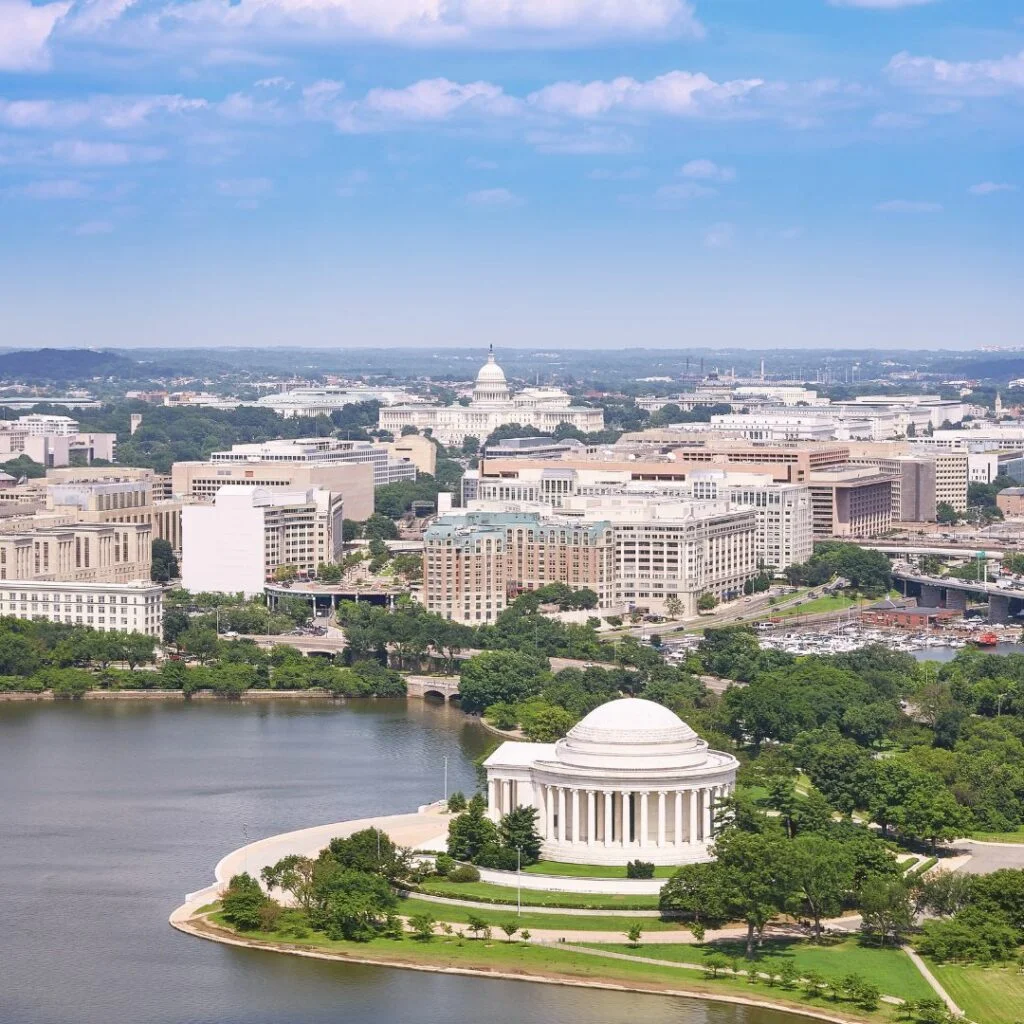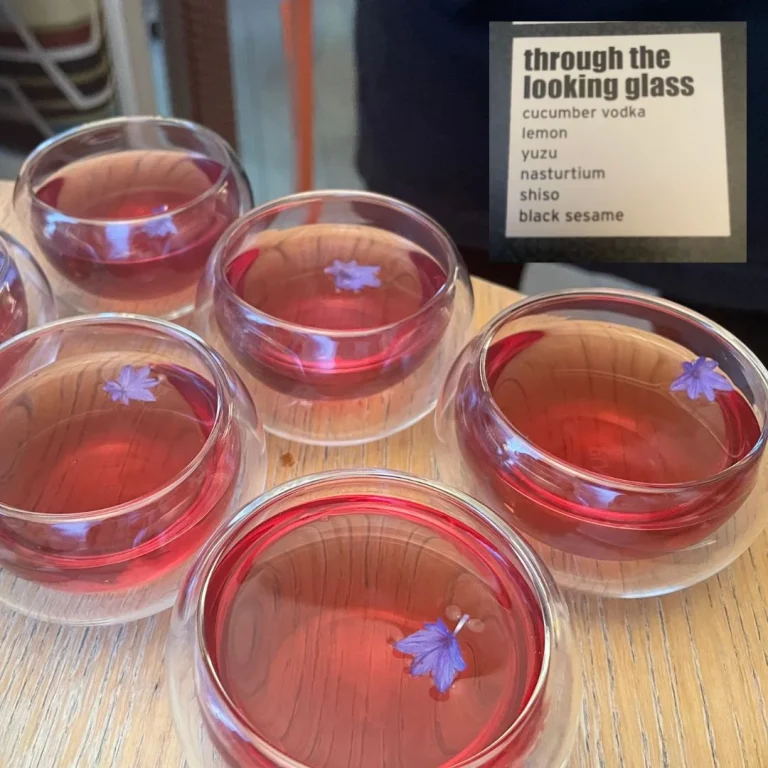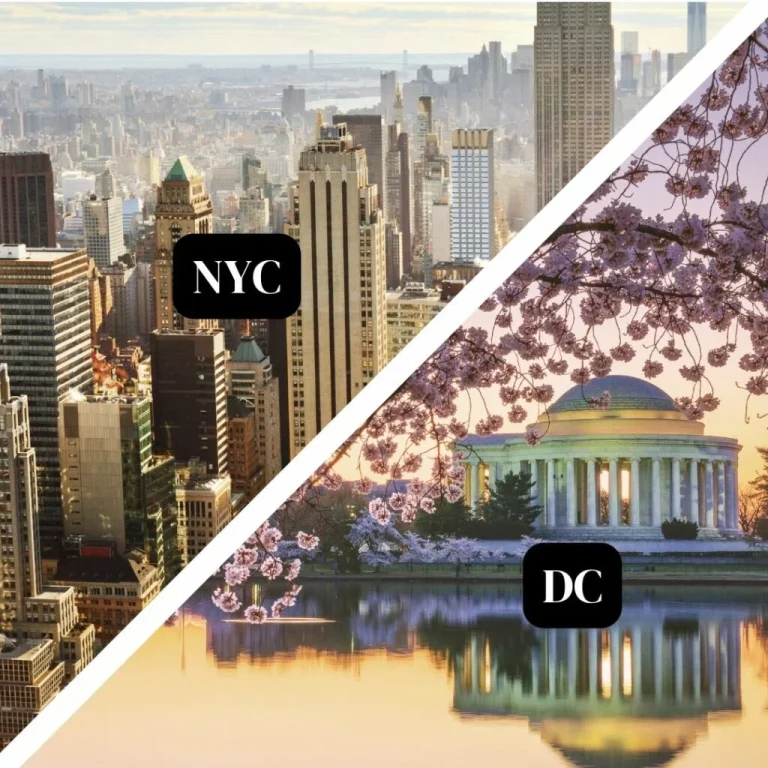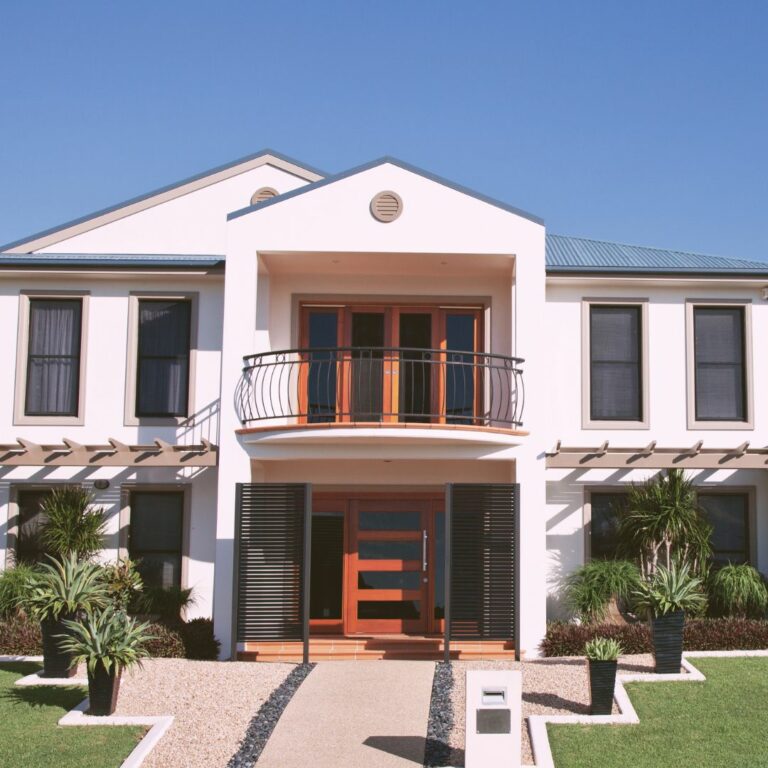Washington, D.C., the capital of the United States, is a really good place to live. DC, or the District of Columbia, has diverse neighborhoods, historic landmarks and many opportunities for cultural enrichment. It is also a hub for politics as well as education. There are some downsides to living here, as there are with every city. Let’s take a look at the pros and cons of living in Washington DC.
Pros And Cons Of Living In DC: Pros
First, let’s examine the pros of living in Washington DC.
Mild Climate With Four Seasons
When it comes to climate, Washington DC experiences a humid subtropical climate. While the summers can be hot and muggy, this is balanced by fairly mild winters. In December, the daily high can be in the 40s. This is much warmer compared to other east coast cities like New York or Boston.
Average summer temperatures range from the mid-70s to high 80s (°F), while winters typically hover between the mid-30s and low 50s (°F). The extremely hot months tend to be July and August, but otherwise the weather is generally very pleasant from March to early December. People here usually open their pools around May and can swim comfortably through September.
If you are someone who wants to enjoy all four seasons, then you are in luck living here. Though the winters are generally mild, DC residents still get to enjoy fall foliage and the occasional snowfall.
History And Culture
It’s already well known that Washington DC has so much to offer in terms of history and culture. Let’s dive in.
Monuments & Museums
Washington DC is home to many free museums and historical monuments. Iconic monuments like the Lincoln Memorial and the Jefferson Memorial can be visited over and over again.
People who live in Washington DC can talk their evening stroll past historic places on a daily basis. The city from the White House to Capitol Hill never gets boring. At night the monuments are lit up and are magical to be around as well.
Art Museums & Art Galleries
There is no shortage of art museums or art galleries in Washington DC. Whether you want to see classics at the National Portrait Gallery or immerse yourself in a modern art experience at Artechouse, there’s something for every person here.
Culture Events & Parades
DC is a central hub for experiencing culture. Beyond the fact that every nation’s embassy is here, there are always cultural events happening. It is a great place in terms of diversity and you can experience so many different cultures in one place.
There are also several parades that take place here annually. From the MLK Day Parade in January to the Gay Pride Parade in June, there’s a few parades almost every month in this city.
Great Public Transportation
Washington DC has a well built public transportation system. Whether you live in the nation’s capital itself or in the suburbs surrounding DC, the chances are that you will have some sort of public transportation option near you.
The DC metro connects the surrounding suburbs to downtown as well as to both IAD and DCA airports. There is also an extensive bus system that people use as well.
3 Major Airports & A Train Station
In addition to great public transportation, getting in and out of Washington DC is easy. If you have family that lives in another city, DC has 3 major airports that can help connect you to them. The two closes are IAD and DCA. BWI, which is closer to Baltimore is about 45 minutes away. Whether you are flying domestic or international there’s plenty of non stop options.
For traveling up and down the east coast and into the Midwest, you can also opt to take the train. The Amtrak provides service everyday from Union Station to all major cities on the east coast. You can be in NYC in under 4 hours and travel all the way down to Florida by train if you want as well.
High Walkability Score
Washington, D.C. also has a high walkability score. It is often rated as one of the most walkable cities in the United States. The walkability score is a measure of how friendly an area is to walking, taking into account factors such as the presence of footpaths, pedestrian safety, density of amenities, and road conditions.
In D.C., many neighborhoods, especially those in the central and downtown areas, are highly walkable, with easy access to public transportation, shops, restaurants, and major attractions. This makes it possible for residents and visitors to accomplish most errands on foot.
Parks, Picnics, Hikes
There are so many green spaces in and around Washington DC. Even though DC is a major city there is no shortage of parks and places to hike both in the city and very close to the city.
Rock Creek Park
Rock Creek Park one of D.C.’s largest and most popular parks. Covering over 1,754 acres, the park provides an array of outdoor activities, such as hiking, biking, and picnicking. Additionally, Rock Creek Park is home to a nature center, planetarium, and an extensive network of trails for visitors to explore.
Gravelly Point
Gravelly Point is a popular park located just north of Ronald Reagan Washington National Airport in Arlington, Virginia. Known for its close proximity to the airport, it offers a unique experience where visitors can watch planes take off and land from a very close range. The park is situated along the Potomac River, providing scenic views and a peaceful environment for picnicking, biking, and jogging.
Great Falls Park & The C & O Canal
Great Falls Park is located on the Virginia side of the Potomac River just outside of DC. You can find entrances to the park in both Virginia as well as in Potomac, MD. It is a national park area known for the impressive Great Falls of the Potomac. In addition to viewing this waterfall, the park has numerous outdoor activities, including hiking, picnicking, rock climbing, and bird watching, with several overlook points.
Adjacent to Great Falls Park is the Chesapeake and Ohio Canal National Historical Park (C&O Canal), which stretches across Maryland and into Washington, D.C. The C&O Canal features a historic towpath, once used by mules to pull canal boats, that is now a popular trail for walking, cycling, and horseback riding, offering serene water views and a glimpse into the region’s past.
The National Mall
Picnicking is quite popular at the National Mall in Washington, D.C. The National Mall is often referred to as “America’s Front Yard.” It is a large open park in downtown Washington, D.C., surrounded by iconic monuments and museums.
The National Mall has plenty of green space perfect for spreading out a blanket and enjoying a meal outdoors. Visitors often take advantage of the scenic views of the Capitol, Washington Monument, and other landmarks while picnicking.
Variety Of Restaurants & Nightlife
In the last decade the restaurant scene has exploded in Washington DC. There is no shortage of amazing food and places to enjoy a bite. Whether you want Michelin rated French food, or a cute coffee shop for lunch, there’s so many dining options here.
If you are looking to be out late night, then DC has a vibrant nightlife as well. While the nightlife may not compare to NYC or LA, it still is better than most cities. There are fantastic cocktail bars here, as well as nightclubs to dance at as well.
Many Educational Institutions
Whether you are looking for great public schools or private schools, the Washington DC metro area has a lot to offer in terms of schools. Some of the countries best universities including Georgetown University are located here. For education before college, many of the DC suburbs have excellent public school systems. In the city of DC itself, the school you attend will depend on the neighborhood you live in.
Pros And Cons Of Living In DC: Cons
As expected, no city is perfect. There are a few cons to choosing to live in this area of the United States.
High Cost Of Living
Living in Washington DC means a high cost of living when compared to areas like the southwest or the midwest. Real estate in the nation’s capital is quite pricey, with the median home value being significantly higher than the national average. Also, desirable neighborhoods tend to have higher home prices and rent, making it difficult for people with limited budgets to find affordable accommodations.
If you are willing to live in a DC suburb, your options expand greatly. DC fortunately is well connected by public transport so living a bit outside of Washington DC can be effective in finding a place where the price is right and still have access to a major metropolitan area.
Traffic
Washington DC is growing and many people are moving to this area. Naturally, due to the influx of people, traffic is only getting worse in the DMV area.
Rush hour especially in Washington DC can be very painful to drive through. Many people commuting from the suburbs into DC will use public transportation for that reason. If you are have a job where you can work from home on certain days, this can be helpful in managing this part.
Tourist Crowds
Washington D.C. is a major tourist destination, which means certain areas can be crowded with visitors, especially during peak seasons. This can make it difficult to enjoy some of the city’s attractions and can add to the general congestion mentioned above.
Crime
Certain parts of Washington DC have seen an increase in crime. It is always important to remain vigilant especially if you are in the Downtown DC area at night. Some neighborhoods are safer than others, but crime in a major city is possible anywhere.
Hot, Humid Summers
While the weather here was mentioned as a positive earlier, if you are not a warm weather person, this big city may not be for you. The warmer months of July and August can sometimes be unbearably hot. Many Washingtonians will leave DC during the summer months to avoid the humidity and the tourist crowds.
The humid months of July and August are balanced out by the fact that Washington DC seldom has extremely harsh winters such as those you might find in New York City or Boston. However, if you’re not a fan of humidity, DC can be not just hot, but quite humid during summer months as well.
Political Environment
As the nation’s capital, politics plays a central role in Washington DC’s culture. This can be a con for those who prefer a less politically charged atmosphere or someone who is seeking a break from constant political discussion and events.
Pros And Cons Of Living In Washington DC: Summary
Living in Washington DC has its pros and cons. The pros include that this city is rich with history and culture. It is a great city for young professionals who want access to all the activity in the D.C. area including great restaurants, several cultural institutions, and many green spaces. It’s a highly connected city with a solid metro system, and 3 major airports nearby.
If you enjoy walking, the nation’s capital is also quite walkable. Depending on where you are zoned, the public school system in DC itself and the DC suburbs are highly rated. Some of the best public schools are in Northern Virginia and Maryland just outside of DC.
Some of the cons of living in DC include crime, traffic, and a high cost of living. The median household income here is much higher than many other parts of the country which can make it unaffordable for many people.





